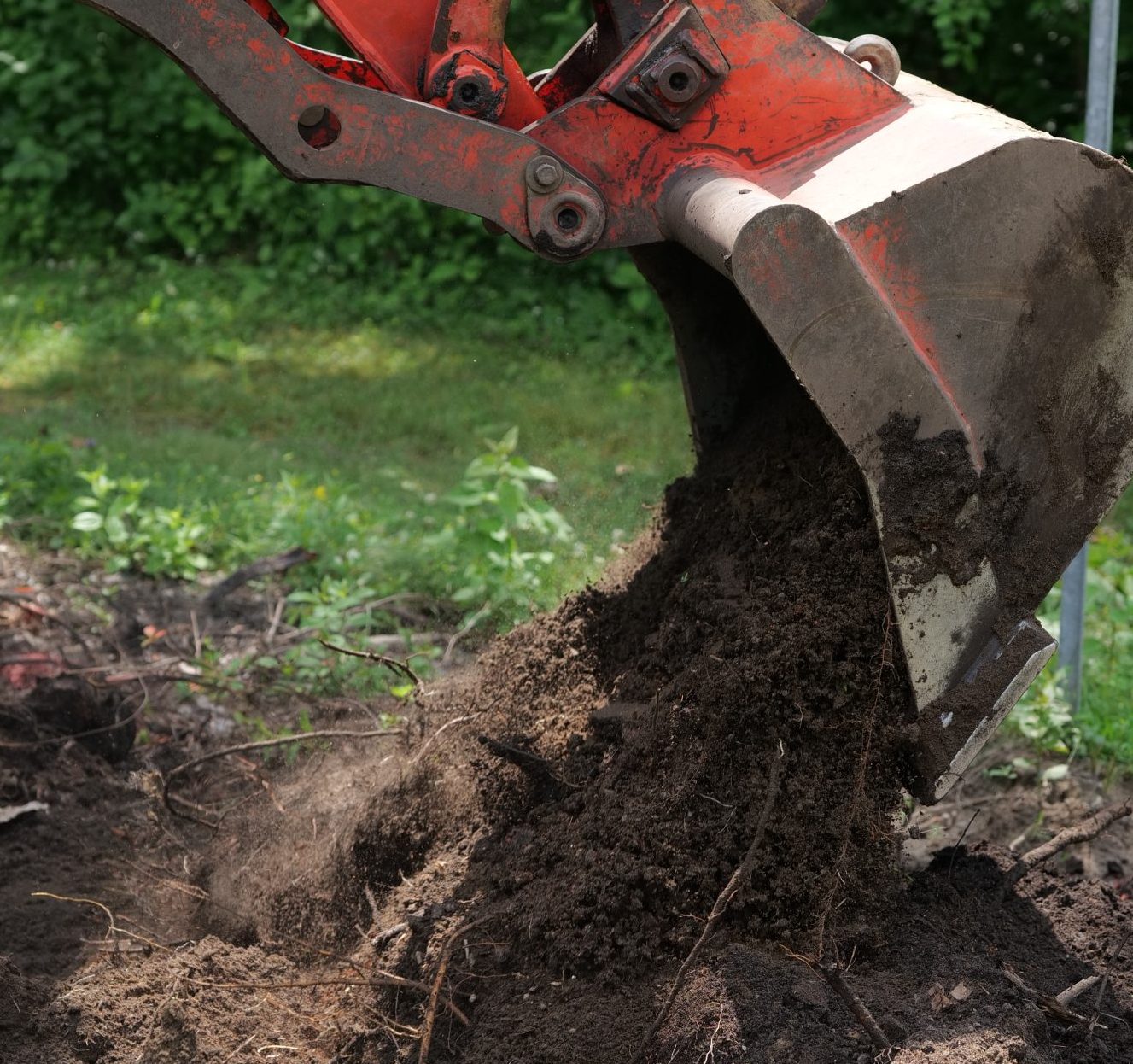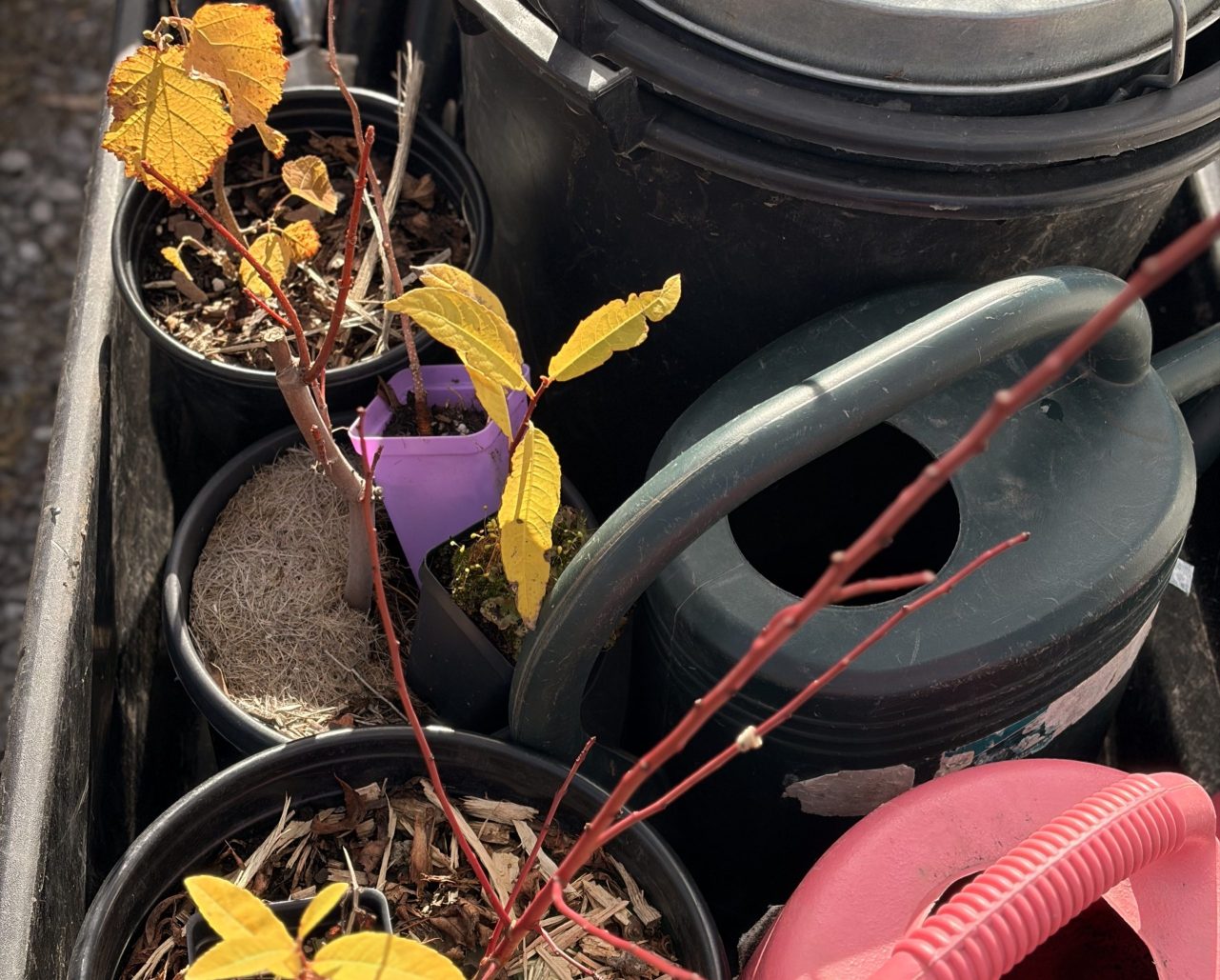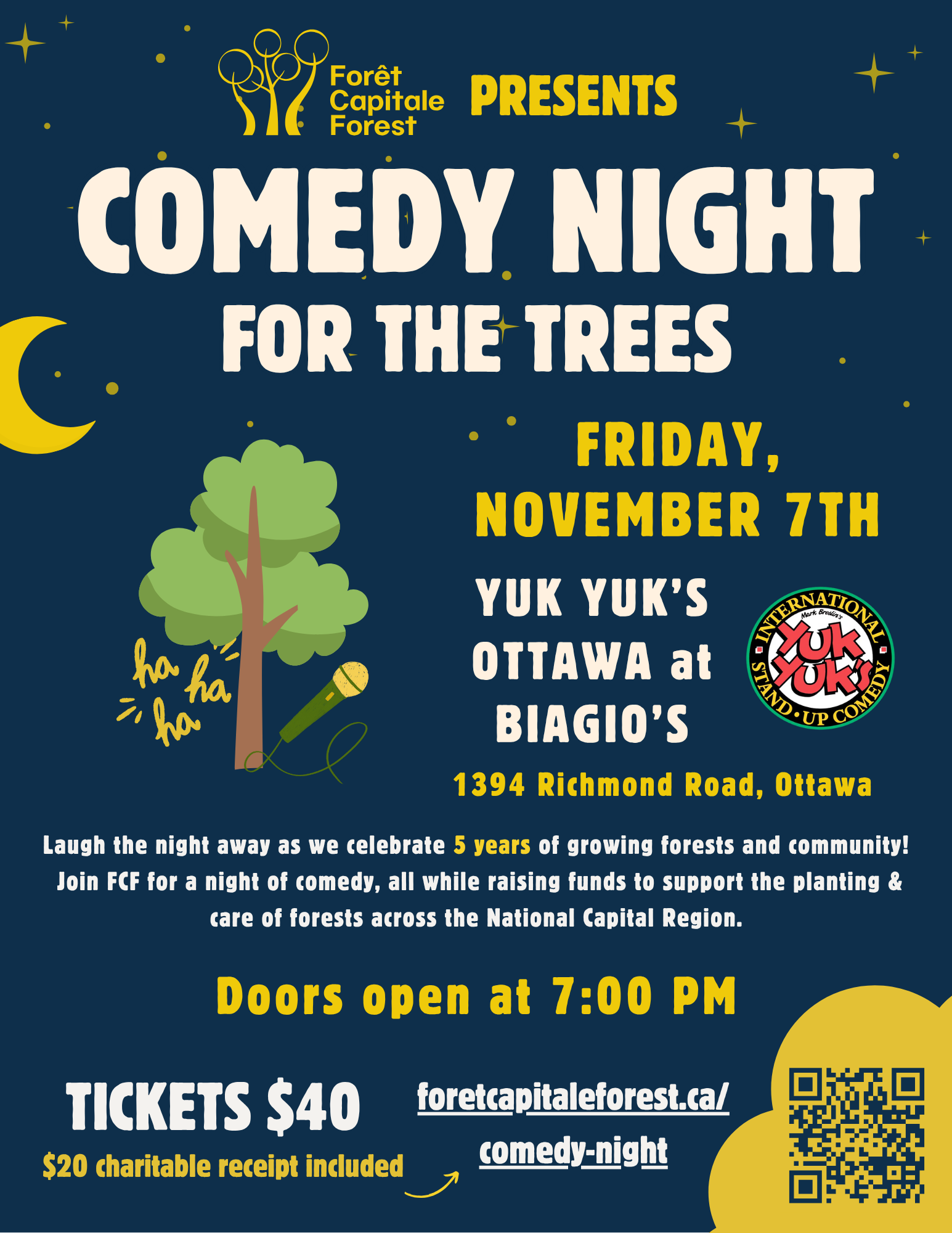We recently co-hosted a Storytelling in Nature event with Louise Profeit-Leblanc at the Birch Path Healing Forest with the Birch Path Healing Forest team and in collaboration with Bird Friendly Ottawa. Louise is a wonderful story-keeper. She chose a particularly poignant story to share upon her first visit to this healing forest (part of the National Healing Forests initiative dedicated for healing, sharing, reconciliation, and reflection on the history and legacy of the residential school system).
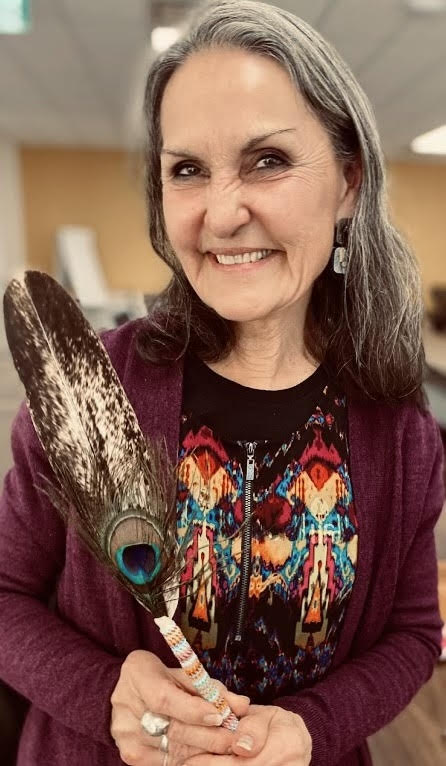
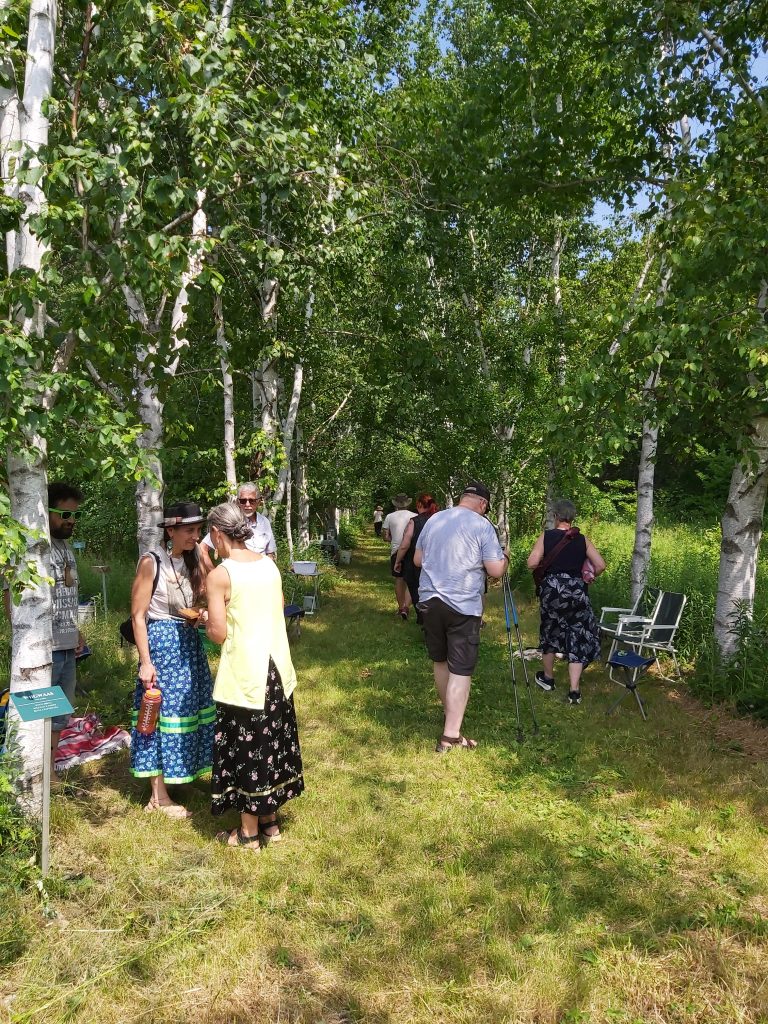
The activity that followed Louise’s story included offering Asemaa (ceremonial tobacco) to the trees (our forest kin), and learning how to call them by their Anishinaabemowin names. Offering this sacred medicine opens a line of communication, we can tell trees our intention to care for and honour them. When we share our intention with a tree, it will share that positive message with all of the other trees around it. This long-held Indigenous teaching now also has some very strong scientific evidence of its validity (please see the work of Professor Simard).
Aani! Hello Wiigwaas, thank you for your shade on this extremely hot morning, please pass along my gratitude to all of your neighbours and friends through your roots and connections. Here is some compost, some water, some mulch. I like the sound of the wind through your leaves, and the birds in your branches. Miigwech!
With the help from many volunteers, we care for the Birch Path Healing Forest and the planted areas nearby. Activities include mulching, watering, weeding, and tending to all of the plants, including the Birch, Oak, and Sugar Maple trees at that site. We also care for the Berry-picking path we planted last year, and the Medicine garden that was established the year before.
As part of the Berry-picking path project, we received funding through Tree Canada’s Treemendous Communities grant for signage. These signs are guides to what is planted and feature the Anishinaabe names for trees, shrubs, and medicine planted at the site. All are welcome to visit the site. Visit and practice saying hello to the plants there (a pronunciation guide is the 2nd line under the Anishinaabemowin name on the signage).

Why I want to greet trees by their Indigenous names? I can think of a few reasons. ‘Learning is fun’. It is nice to use the tree’s first name. There is also a correlation between the loss of Indigenous languages and the loss of biodiversity on the planet. Forêt Capitale Forest places a great importance on biodiversity. Our mission is not just to plant and care for trees, but also increase biodiversity. Does speaking and keeping the names of trees at the tip of our tongues help conserve biodiversity? It is unclear. Certainly it won’t reduce it. From this article “As forests are cleared and species vanish, there is one other loss: a world of languages”, Benny Wenda says…
“If you fell the trees then you destroy human culture as well as the birds of paradise. People depend on the forest and the forest has always depended on us. We are as one.”
If you would like to help care for Aniinaatig (Sugar Maple), Miin (Blueberry), Giizhik (White Cedar), and many other plants at the Birch Path Healing Forest, please send an email to comms@foretcapitaleforest.ca. There are also opportunities to help organize the next Storytelling in Nature event which we hope can take place this fall. Please connect with us and/or with your local trees! I am wishing you the pleasure of the cool shade of trees in the summer heat and a sense of gratitude for all that they provide us.

